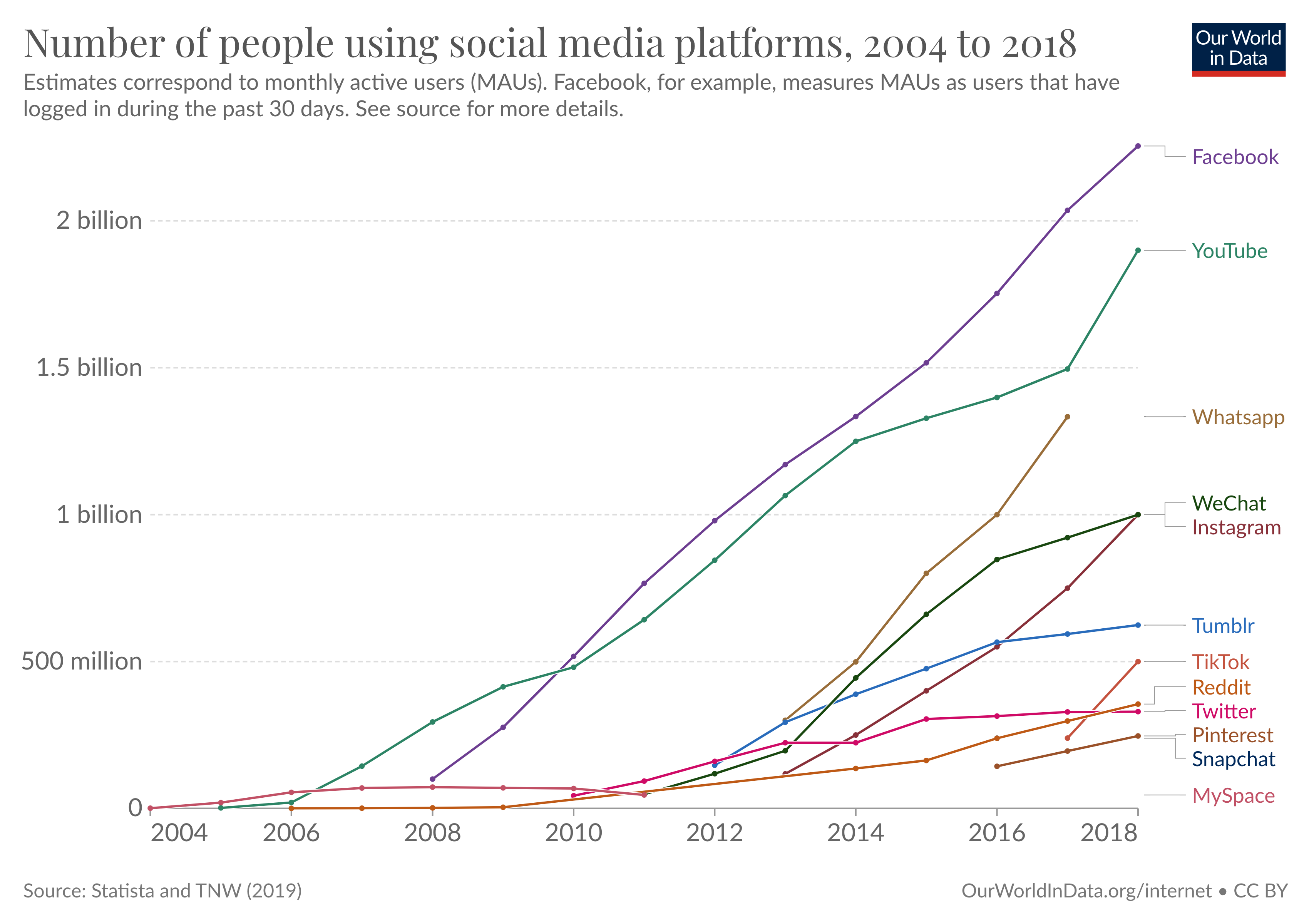
This article is an archived version of an article published in 2019. Due to data availability, the article and charts will not be updated.
Facebook, the largest social media platform in the world, had 2.4 billion users in 2019. Other social media platforms, including YouTube and WhatsApp, also had over one billion users each.
These numbers are huge – in 2019, there were 7.7 billion people worldwide, with at least 3.5 billion online . This means social media platforms were used by one in three people worldwide and more than two-thirds of all Internet users.
Social media has changed the world. The rapid and vast adoption of these technologies is changing how we find partners , access information from the news, and organize to demand political change .
Who uses social media? When did the rise of social media start, and how has the number of users changed over time? Here we answer these and other key questions to understand the history of social media worldwide.
We begin with an outline of key trends and conclude with a perspective on the social media adoption rate relative to other modern communication technologies.
MySpace was the first social media site to reach a million monthly active users – it achieved this milestone around 2004. This is arguably the beginning of social media as we know it. 1
In the chart, we plot monthly active users across various platforms since 2004.
Some large social media sites, such as Facebook, YouTube, and Reddit, have been around for ten or more years, but others are much newer.
TikTok, for example, launched in September 2016, and by mid-2018, it had already reached half a billion users. To put this in perspective: TikTok gained, on average, about 20 million new users per month over this period.
The data also shows rapid changes in the opposite direction. Once-dominant platforms have disappeared. In 2008, Hi5, MySpace, and Friendster were close competitors to Facebook, yet by 2012 they had virtually no market share. The case of MySpace is remarkable, considering that in 2006 it temporarily surpassed Google as the most visited website in the US.
Most social media platforms that survived the last decade have shifted significantly in what they offer users. Twitter, for example, didn’t allow users to upload videos or images initially. Since 2011 this has been possible, and today, more than 50% of the content viewed on Twitter includes images and videos.

With 2.3 billion users, Facebook was the most popular social media platform in 2019. YouTube, Instagram, and WeChat followed, with over a billion users. Tumblr and TikTok came next, with over half a billion users.
The bar chart shows a ranking of the top social media platforms.
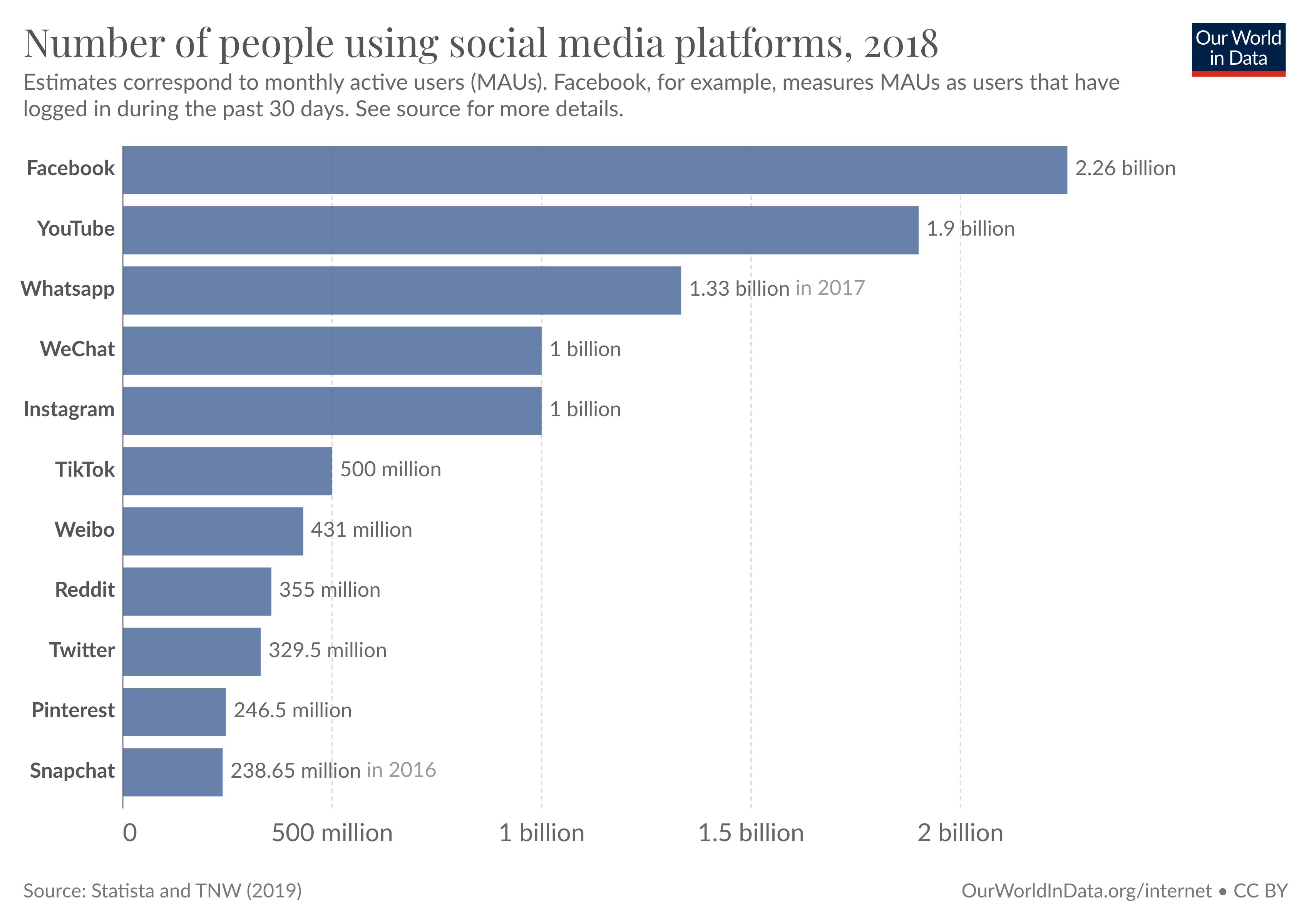
The aggregate numbers mask a great deal of heterogeneity across platforms. Some social media sites are much more popular than others among specific population groups.
In general, young people are more likely to use social media than older people. But some platforms are much more popular among younger people. This is shown in the chart where we plot the breakdown of social media use by age group in the US.
For Snapchat and Instagram, the ‘age gradient’ is exceptionally steep – the popularity of these platforms drops much faster with age. Most people under 25 use Snapchat (73%), while only 3% of people over 65 use it.
Since these platforms are relatively new, it’s hard to know how much of this age gradient results from a “cohort effect”. In other words: it’s unclear whether today’s young people will continue using Snapchat as they age. If they do, the age gradient will narrow.
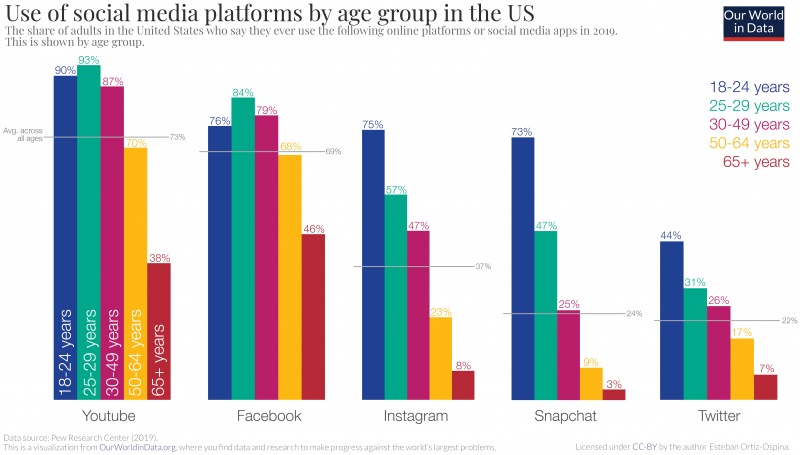
Let’s now look at gender differences.
This chart shows the percentage of men and women that used different platforms in the US in 2021—the diagonal line marks parity. Sites above the diagonal line are more popular among women, and those below are more popular among men.
For some platforms, the gender differences are substantial. The share of women who used Pinterest was 3 times as high as that of men using this platform. For Reddit, it was the other way around: the share of men was twice as high.
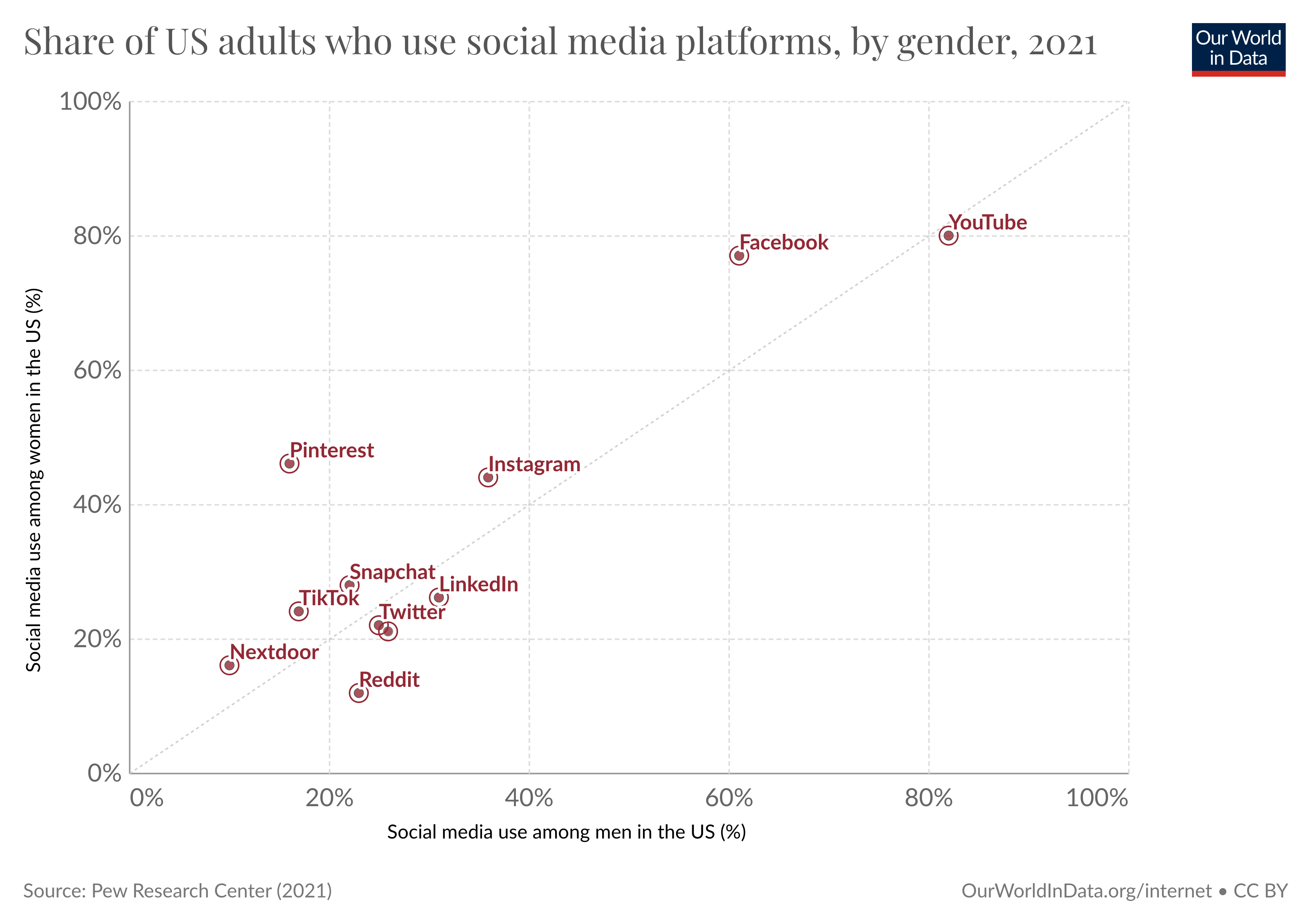
From a back-of-the-envelope calculation, we know that if Facebook had 2.3 billion users in 2019, then at least 30% of the world was using social media. 2 This is just an average – usage rates were much higher for some world regions, specifically for some population groups.
Young people tend to use social media more frequently. In fact, in rich countries where access to the Internet is nearly universal , the vast majority of young adults use it.
Our chart shows the proportion of people aged 16 to 24 who used social networks across various countries. As we can see, the average for the OECD is close to 90%.
If today’s young adults continue using social media throughout their lives, then it’s likely that social media will continue growing rapidly as Internet adoption expands throughout lower-income countries .
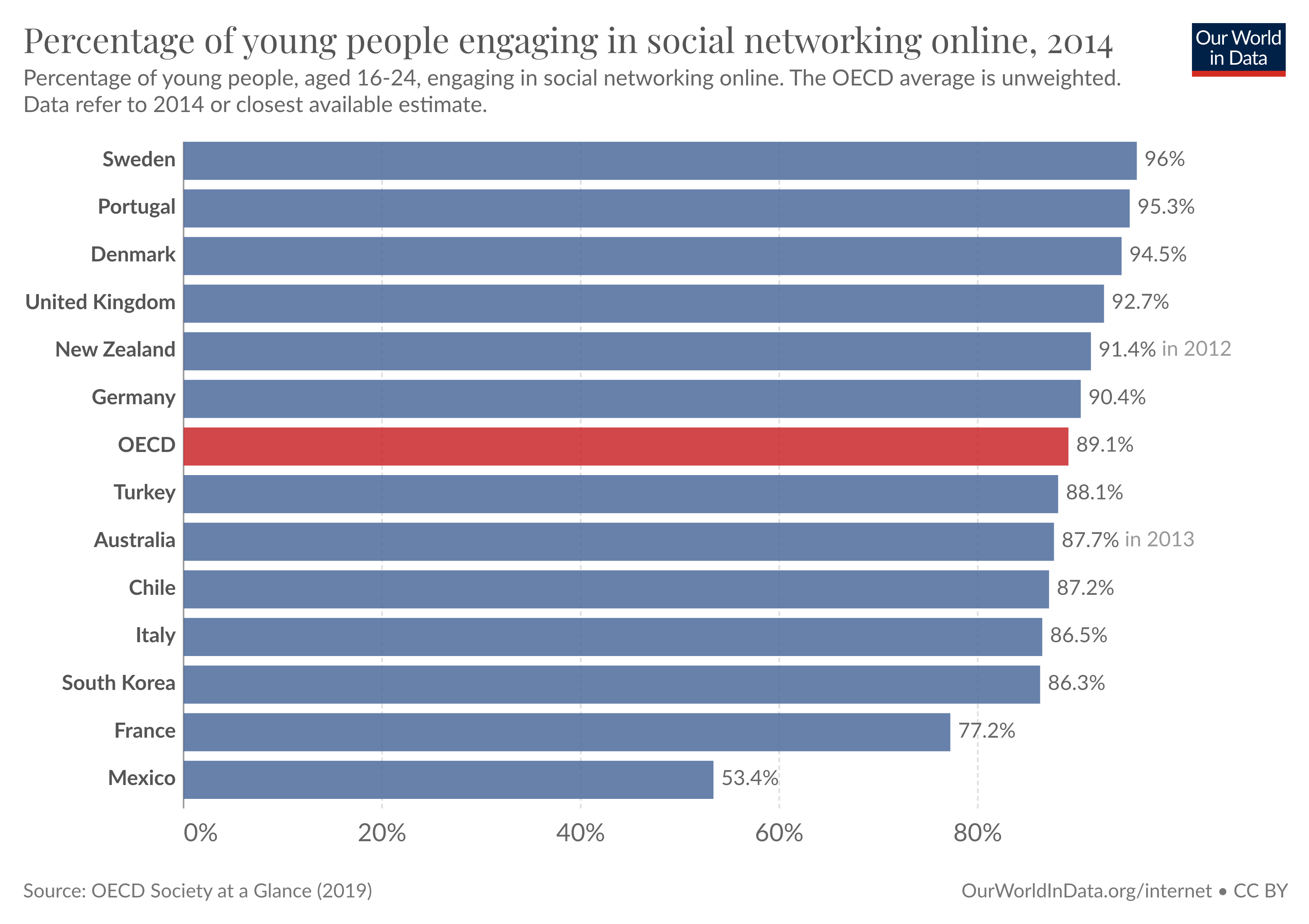
The increase in social media use over the last decade has, of course, come together with a large increase in the amount of time people spend online.
In the US, adults spend more than 6 hours daily on digital media (apps and websites accessed through mobile phones, tablets, computers, and other connected devices such as game consoles). As the chart shows, this growth has been driven almost entirely by additional time spent on smartphones and tablets. 3
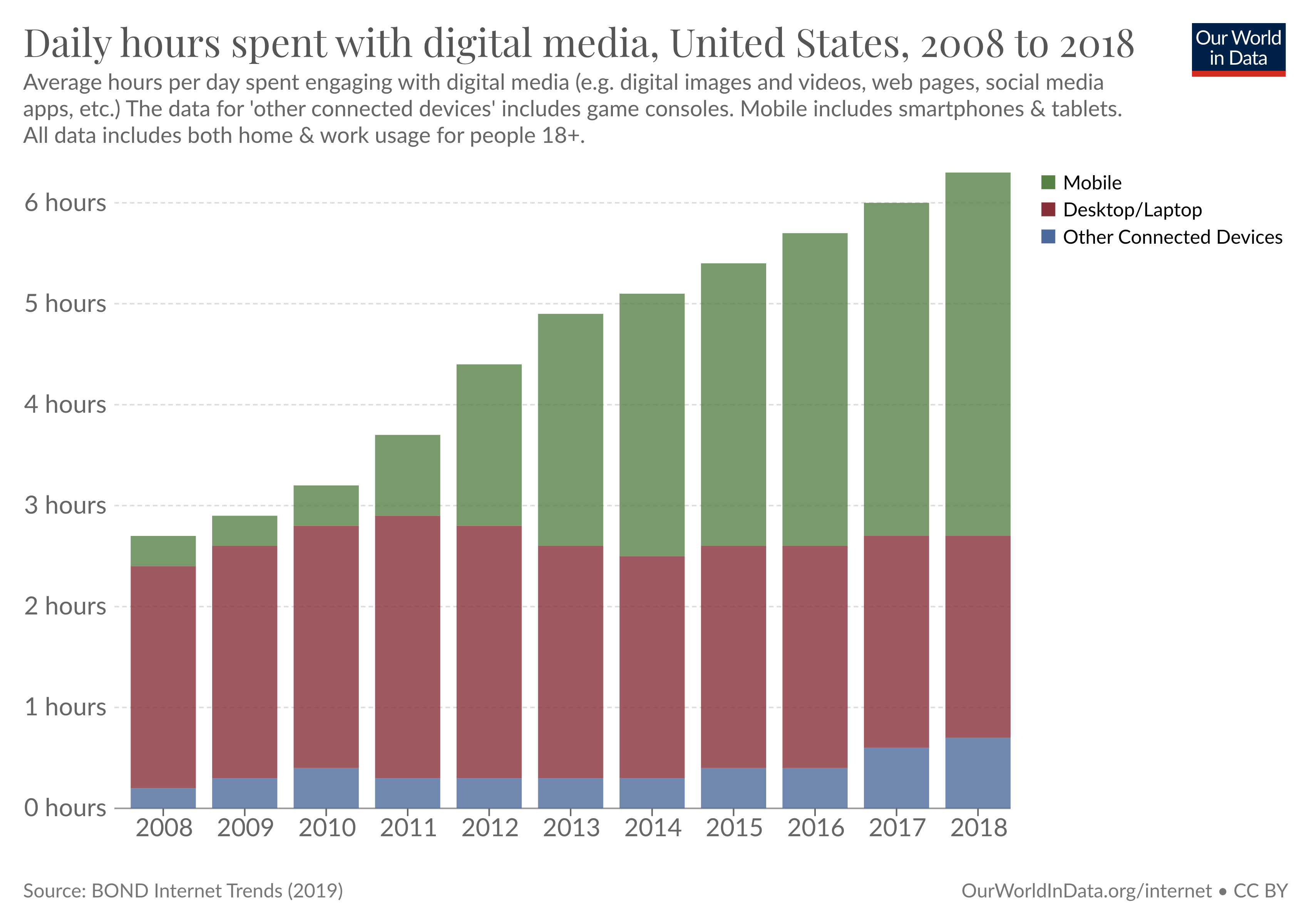
According to a survey from the Pew Research Center, adults aged 18 to 29 in the US are more likely to get news indirectly via social media than directly from print newspapers or news sites. They also report being online “almost constantly” . 4
Evidence shows that in other rich countries, people also spend many hours per day online. The following chart shows how many hours young people spend online across various rich countries. As we can see, the average for the OECD is more than 4 hours per day; in some countries, the average is above 6 hours per day.
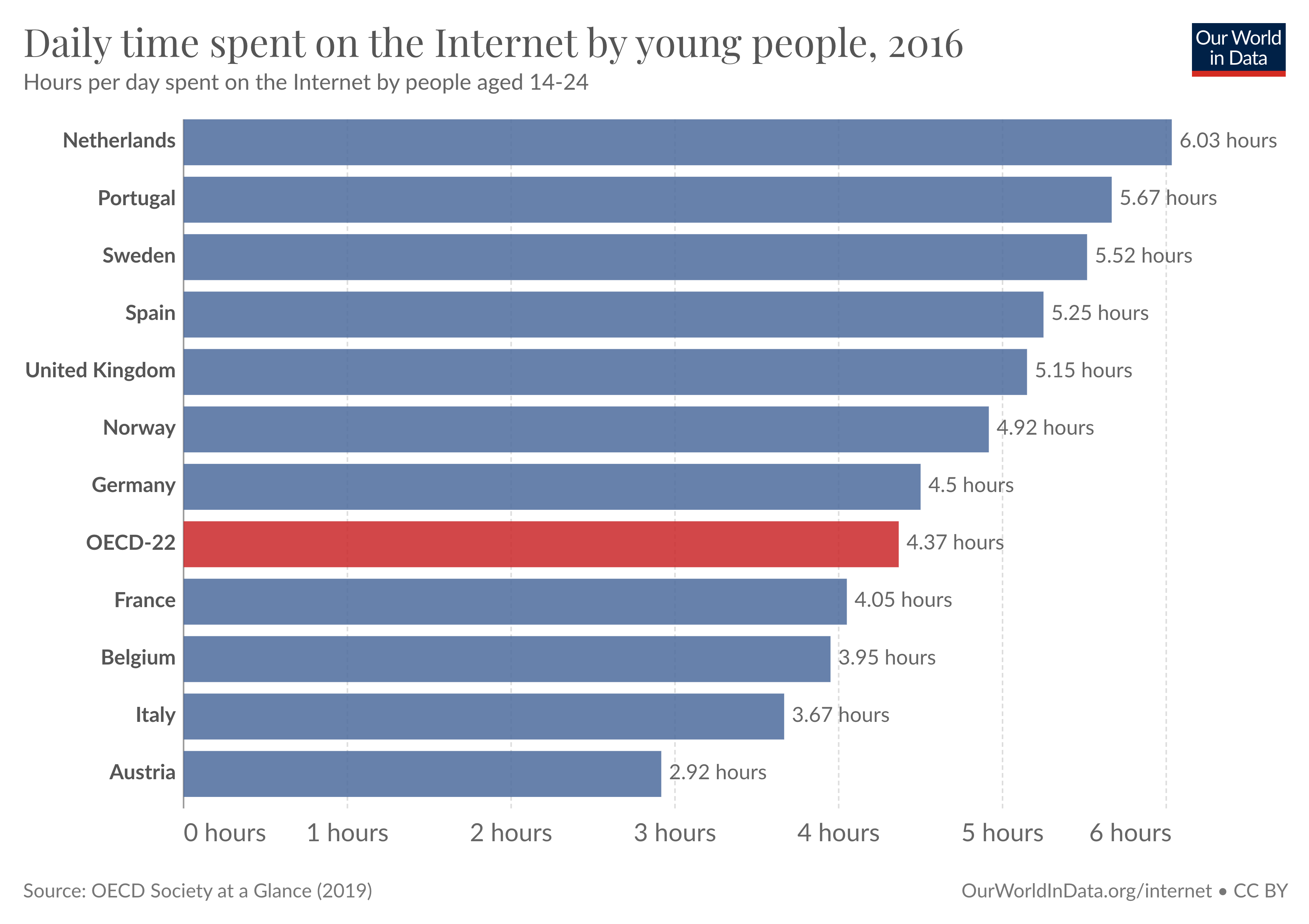
The percentage of US adults who use social media increased from 5% in 2005 to 79% in 2019. Even on a global stage, the speed of diffusion is striking: Facebook surged from covering around 1.5% of the world population in 2008 to around 30% in 2018. 5
How does this compare to the diffusion of other communication technologies in today's everyday life?
The following chart provides some perspective.
Social media’s growth in the US is comparable – in speed and, to some extent, reach – to most modern communication-enabling technologies, including computers, smartphones, and the Internet.
The rise of social media is an extraordinary example of how quickly and drastically social behaviors can change: Something that is today part of the everyday life of one-third of the world population was unthinkable less than a generation ago.
Rapid changes like those brought about by social media always spark fears about possible negative effects. Specifically, in the context of social media, a key question is whether these new communication technologies are harming our mental health – this is an important question and we cover the evidence in another article on Our World in Data.
Our articles and data visualizations rely on work from many different people and organizations. When citing this article, please also cite the underlying data sources. This article can be cited as:
Esteban Ortiz-Ospina (2019) - “The rise of social media” Published online at OurWorldinData.org. Retrieved from: 'https://ourworldindata.org/rise-of-social-media' [Online Resource]@article, title = , journal = , year = , note = >All visualizations, data, and code produced by Our World in Data are completely open access under the Creative Commons BY license. You have the permission to use, distribute, and reproduce these in any medium, provided the source and authors are credited.
The data produced by third parties and made available by Our World in Data is subject to the license terms from the original third-party authors. We will always indicate the original source of the data in our documentation, so you should always check the license of any such third-party data before use and redistribution.
Our World in Data is free and accessible for everyone.
Help us do this work by making a donation.
Licenses: All visualizations, data, and articles produced by Our World in Data are open access under the Creative Commons BY license. You have permission to use, distribute, and reproduce these in any medium, provided the source and authors are credited. All the software and code that we write is open source and made available via GitHub under the permissive MIT license. All other material, including data produced by third parties and made available by Our World in Data, is subject to the license terms from the original third-party authors.
Please consult our full legal disclaimer.
Our World In Data is a project of the Global Change Data Lab, a registered charity in England and Wales (Charity Number 1186433).